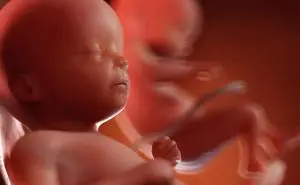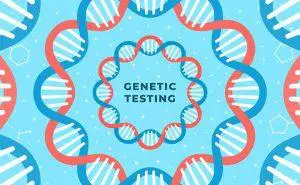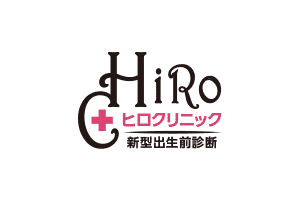Delve into the diverse spectrum of chromosomal abnormalities, from trisomies to deletions, with comprehensive insights. Understand the implications and potential impacts of these genetic variations.
Types of Chromosomal Abnormalities
There are various types of chromosomal abnormalities. These include well-known abnormalities in the number and structure of chromosomes, abnormalities involving multiple autosomes or sex chromosomes, and abnormalities where both are involved.
Furthermore, there are congenital and acquired abnormalities. Congenital abnormalities refer to cases where abnormalities occur in germ cells at the stage of fertilized eggs, known as chromosomal abnormality syndromes. Acquired abnormalities occur in somatic cells due to environmental factors or long-term accumulation, resulting in chromosomal abnormalities or chromosomal abnormalities caused by tumors.

In terms of types, chromosomal abnormalities can be broadly classified into the following two categories:
- Autosomal abnormalities
- Sex chromosome abnormalities
Furthermore, autosomal abnormalities can be classified into the following types:
- a.Numerical abnormalities
- (1)Aneuploidy
- (2)Triploidy, Tetraploidy
- (3)Sex Chromosome Aneuploidy
- b.Structural abnormalities
- (1)Deletion
- (2)Ring chromosome
- (3)Duplication
- (4)Inversion
- (5)Insertion
- (6)Isochromosome
- (7)Reciprocal translocation
- (8)Dicentric chromosome
For sex chromosome abnormalities, there are three types:
- a.Numerical abnormalities
- b.Structural abnormalities
- c.Fragile X syndrome
Autosomal abnormalities
a.Numerical abnormalities
(1)Aneuploidy
In humans, we typically have 46 chromosomes arranged in 23 pairs. Aneuploidy refers to having a number of chromosomes other than 46. If there is a deviation in the number of chromosomes, ranging from 1 to several, it is referred to as aneuploidy.
(2)Triploidy, Tetraploidy
Normal somatic cells are diploid (2n). Triploidy and tetraploidy are typically observed during the fetal stage. In triploidy, which has a chromosome number of 3n (69 chromosomes), the fetus usually cannot survive for long but can be born alive. Triploidy mostly occurs due to the fertilization of an egg by two sperm cells (dispermy), and it can also result from the formation of diploid eggs or sperm. In cases of triploidy originating from the father, abnormal placental development occurs. On the other hand, triploidy originating from the mother often leads to early miscarriage in pregnancy. Tetraploidy results in a chromosome number of 4n (92 chromosomes). When this type of division occurs in sex chromosomes, it can lead to configurations like XXYY or XYYY, where there is an abnormality in sex chromosome numbers.
(3)Chromosomal numerical aberration
Aneuploidy is a clinically significant chromosomal abnormality in humans. Most cases of aneuploidy involve trisomy, where there are three copies of a particular chromosome instead of the normal pair (two copies). Trisomy can occur with any autosome.
However, for chromosomes with a large number of genes, most cases result in miscarriage. Newborns with trisomy 21, which involves the chromosome with fewer genes, account for 95% of cases. Other trisomies observed in newborns include trisomy 18 and trisomy 13. Less frequently, there is monosomy (having only one chromosome instead of a pair). While most cases of autosomal monosomy result in miscarriage, monosomy of the X chromosome, known as Turner syndrome, is clinically significant and associated with various health issues.
The cause of aneuploidy is known to be due to improper chromosome separation (non-disjunction) during meiosis.
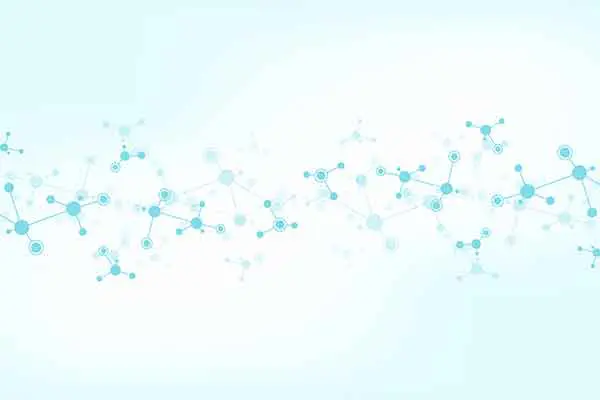
b.Structural Abnormalities
(1)Deletion
Deletion occurs when a portion of one of the two chromosomes is missing, leading to chromosomal imbalance. Normally, both chromosomes are of equal size and carry out the functions of the chromosome. However, when a portion of one chromosome is lost, it becomes non-functional, leading to haploinsufficiency. This results in symptoms.
The severity of symptoms depends on the number of genes missing from the deleted chromosome and the size of the deleted fragment.
(2)Ring chromosome
A ring chromosome is formed when two breaks occur in one of the two chromosomes, and the broken ends join together to form a ring structure. While rare, this phenomenon can occur in any chromosome.
(3)Duplication
Duplication, like deletion, arises from abnormal separation during meiosis, such as unbalanced crossing over or other abnormalities like translocation and inversion, as mentioned later. Duplication is believed to have less clinical impact compared to deletion. Duplication in gametes (sperm or egg cells) results in partial trisomy (chromosomal imbalance). Additionally, duplication can disrupt genes due to chromosome breakage, leading to abnormalities in phenotype.
(4)Inversion
Inversion refers to a chromosomal abnormality where two breaks occur on a single chromosome, resulting in the rearrangement of the fragments in the opposite direction. Inversions can occur with breakpoints within one arm (pericentric) or with breakpoints involving both arms (including the centromere, known as paracentric). Inversions involve balanced rearrangements, so carriers typically do not exhibit abnormal phenotypes (i.e., disease). However, they can lead to unbalanced chromosomal abnormalities in offspring. Interestingly, inversions in the small arm of chromosome 9 seem to pose no risk of miscarriage or offspring with unbalanced chromosomal abnormalities for carriers. Therefore, they are considered normal variants.
(5)Insertion
Insertion is a chromosomal abnormality where a segment of one chromosome is inserted into another chromosome, either in the same orientation or in the opposite orientation. This occurrence is extremely rare in frequency.
(6)Paracentric inversion
It is called a chromosome formed with one arm being the short arm or the long arm. If one arm is missing from the short arm, the other arm becomes duplicated. This is observed in some cases of Turner syndrome, which is an X chromosome abnormality.
(7)Reciprocal translocation
It refers to a state where there are breaks in each of two non-homologous chromosomes, and the fragments are exchanged with each other. Breaks can occur in any chromosome. The number of chromosomes does not change, so carriers are healthy, but male carriers may become infertile.
(8)Dicentric chromosome
A dicentric chromosome is a chromosome that possesses two centromeres, formed when two separate chromosomes are simultaneously broken, and the fragments, each containing a centromere, fuse together. It is known as a chromosome abnormality induced by radiation exposure, in addition to cell division (mitosis and meiosis).
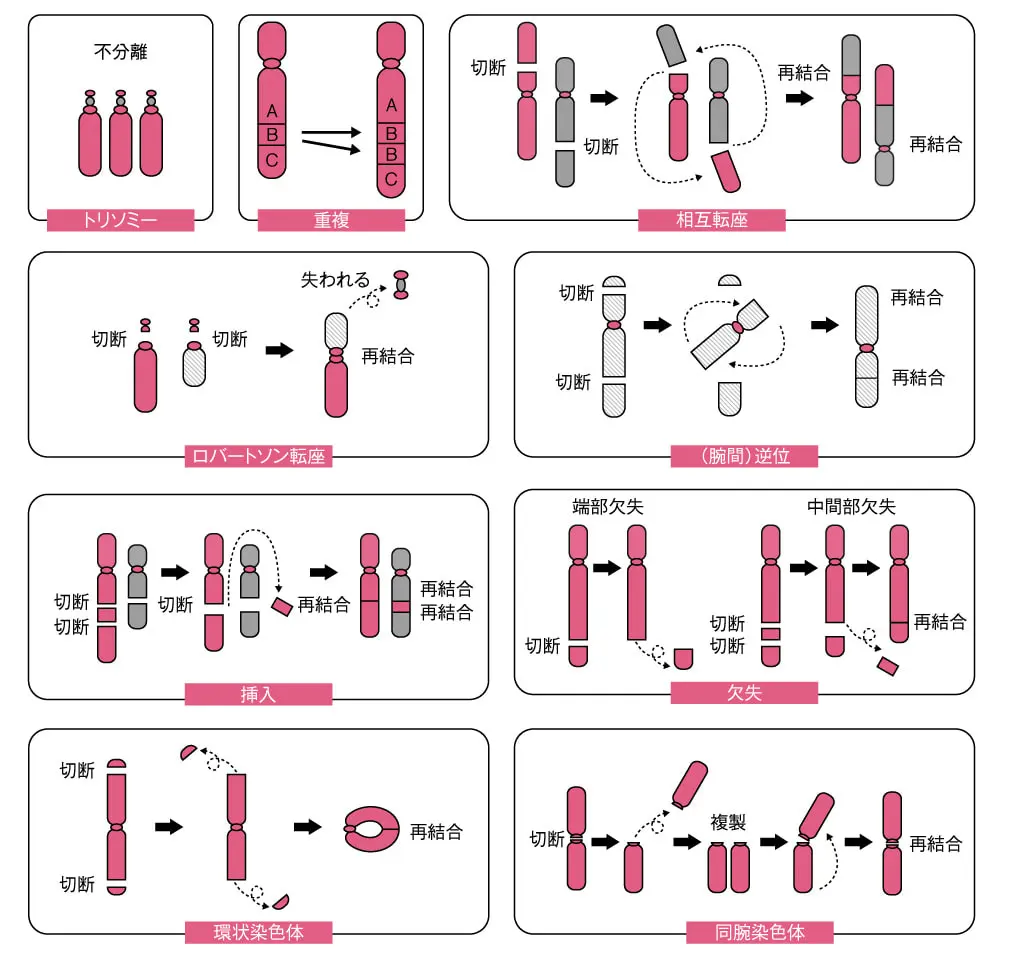
Sex chromosome abnormalities
a.Abnormalities in number
Human sex chromosomes consist of two types. Their abnormalities are diverse and are said to have a high occurrence rate. This occurs due to non-disjunction of chromosomes.
b.Structural abnormalities
Structural abnormalities of the X chromosome are diverse. Turner syndrome is particularly well-known for this. Additionally, there is a pseudoautosomal region (PAR) at the short arm end of both the X and Y chromosomes. Since this PAR does not undergo X inactivation, it is known that its absence leads to short stature in both females and males. Moreover, it is said that an increase in the number of X or Y chromosomes leads to taller stature. There are also reciprocal translocations between the X chromosome and autosomes.
c.Fragile X syndrome
There is a disorder with fragile sites on the long arm of the X chromosome. This leads to mental retardation and physical symptoms.
 中文
中文






